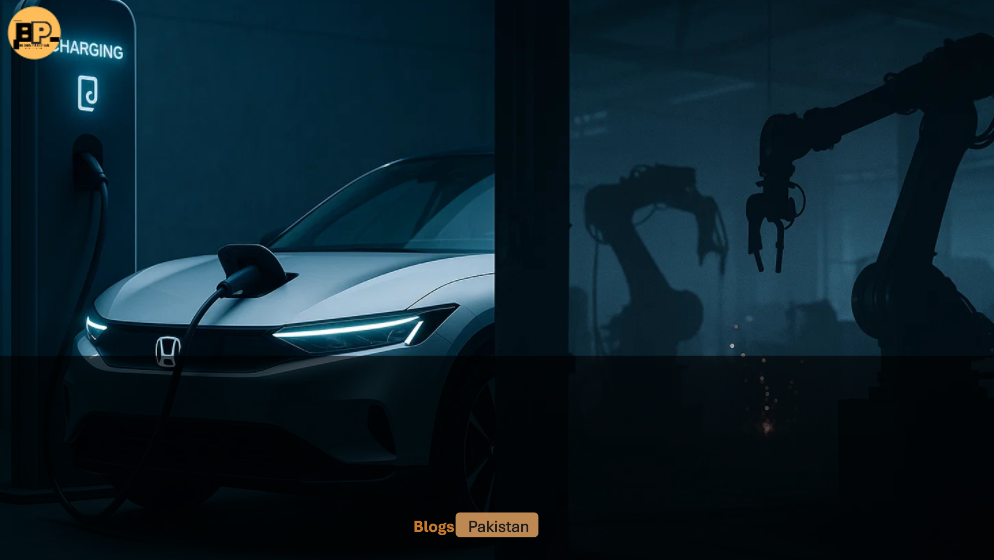The automotive world is witnessing a paradox: Honda, one of the industry’s most storied brands, is scaling back its electric vehicle (EV) investment by $21 billion—yet insists it’s charging ahead with new models. This strategic tug-of-war between fiscal caution and innovation reveals a company grappling with market realities while refusing to surrender its electric ambitions. Let’s unpack Honda’s bold, if contradictory, roadmap.
Honda’s Revised EV Strategy: Less Spending, More Focus
In May 2024, Honnda CEO Toshihiro Mibe dropped a bombshell: the company slashed its 2031 EV investment target from $69 billion to $48 billion. Simultaneously, it revised its sales forecast, expecting EVs to make up under 30% of global sales by 2030, down from earlier, more aggressive targets.
Why the pullback? Analysts point to slowing EV demand in key markets like the U.S. and Europe, where high prices and charging infrastructure gaps have cooled consumer enthusiasm. “We’re prioritizing efficiency over volume,” Mibe explained, signaling a shift toward targeted investments in high-potential regions and technologies.
The Honda 0 Series: A New Chapter Begins in 2026
Despite trimmed budgets, Honda’s EV pipeline remains active. The marquee launch is the 0 Series, a lineup of next-generation electric vehicles set to debut in 2026. Leading the charge is the Saloon, a sleek sedan inspired by the Space-Hub concept (image suggestion: futuristic render of the Saloon with aerodynamic curves).
Three Electric SUVs Join the Fray
By 2028, the 0 Series will expand to include three SUVs. One, previewed in near-production form, features Honda’s signature minimalist design and a focus on lightweight materials. These models aim to address criticisms of current EVs—bulky frames and limited range—by emphasizing agility and energy efficiency.
The Prologue’s Twilight: No Successor After GM Split
Honda’s first mass-market EV in North America, the Prologue SUV, faces an uncertain future. Developed alongside GM’s Chevrolet Blazer, the Prologue will receive a facelift in 2028. However, Honda confirmed there will be no next-generation model following the dissolution of its EV partnership with GM.
This decision underscores the challenges of shared platforms. While collaborations reduce costs, they limit brand differentiation. “We’re pivoting to in-house EV development,” a Hnda spokesperson noted, hinting at greater control over future designs.
China’s EV Boom: Honda’s Silent Power Play
While scaling back in some regions, Honda is doubling down on China, the world’s largest EV market. Through joint ventures with Dongfeng and GAC, the brand is rolling out China-exclusive models:
- GT Electric Sedans: Positioned as premium rivals to Tesla’s Model 3.
- Ye Series SUVs: The Ye P7 and Ye S7, built on dedicated EV platforms, target tech-savvy urban buyers (image suggestion: Ye S7 SUV at a charging station in Shanghai).
Notably, Honda hasn’t confirmed global availability for these models, suggesting a “China-first” strategy to capitalize on the region’s rapid electrification.
Hydrogen’s Quiet Comeback: Honda Goes Solo
While rivals like Toyota champion hybrids, Honda is betting on hydrogen. After ending its hydrogen partnership with GM, the company announced plans to launch a new fuel cell vehicle (FCEV) in 2027. Details are scarce, but insiders hint at a crossover design aimed at commercial fleets and select consumer markets.
Hydrogen’s appeal lies in its refueling speed and potential for heavy-duty transport. However, infrastructure hurdles remain. “This is a long-term play,” Mibe admitted, acknowledging that FCEVs won’t rival EVs in scale this decade.
Decoding the Contradiction: Why Cut and Invest?
Honda’s strategy seems paradoxical, but a closer look reveals methodical reasoning:
- Regional Realities: By focusing EV efforts on China (where adoption is state-driven) and hedging with hydrogen elsewhere, Honda minimizes risk.
- Profitability Over Volume: Smaller, targeted investments in high-margin EVs (like the 0 Series) could yield better returns than mass-market plays.
- Legacy Strengths: Honda’s expertise in fuel cells and hybrids allows it to diversify beyond pure EVs.
The Road Ahead: Can Honda Stay Relevant?
Critics argue Honnda’s cautious approach might cede ground to Tesla and Chinese giants like BYD. Yet, the company’s adaptability shouldn’t be underestimated. By balancing innovation with fiscal prudence, Honda aims to weather the industry’s turbulent transition.
Key challenges include:
- Battery Tech: Developing affordable, high-performance batteries without overinvesting.
- Brand Identity: Differentiating its EVs in a crowded market.
- Infrastructure Advocacy: Pushing for hydrogen and charging networks alongside governments.
Final Thoughts
EV strategy is a high-stakes balancing act. While its reduced investment reflects caution, the 0 Series and China push prove it’s not abandoning the race. For consumers, this could mean fewer EV options initially—but ones that are sharper, smarter, and tailored to regional needs.










